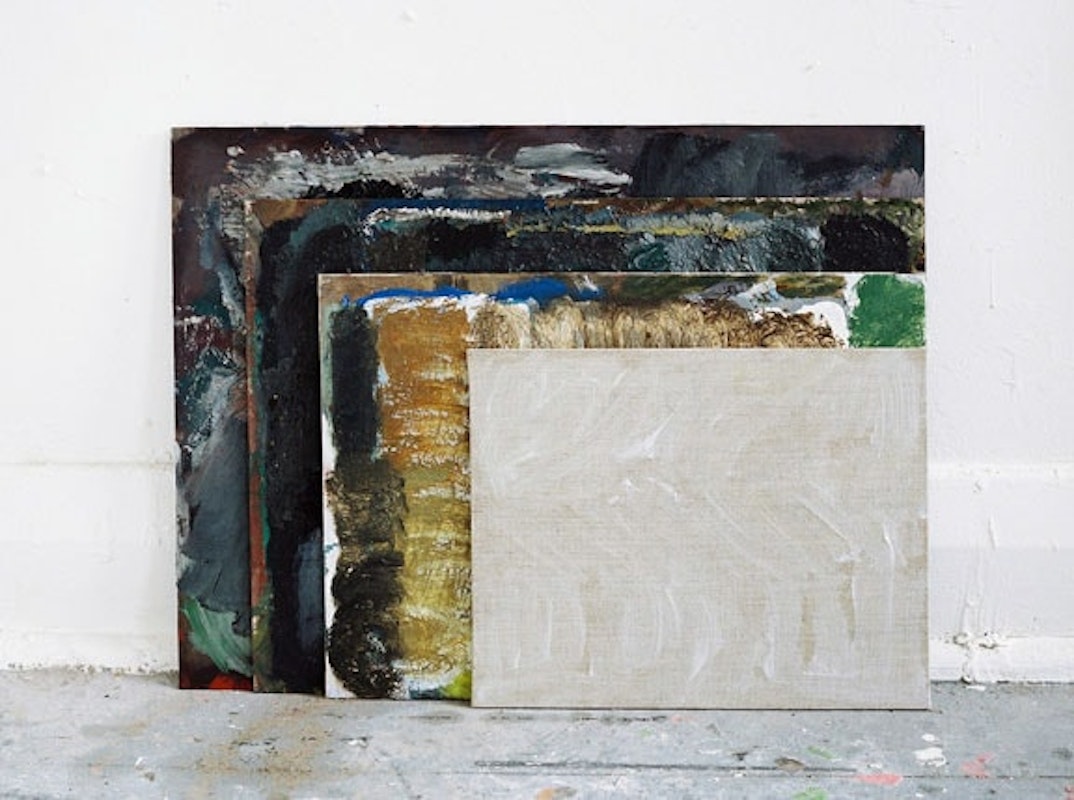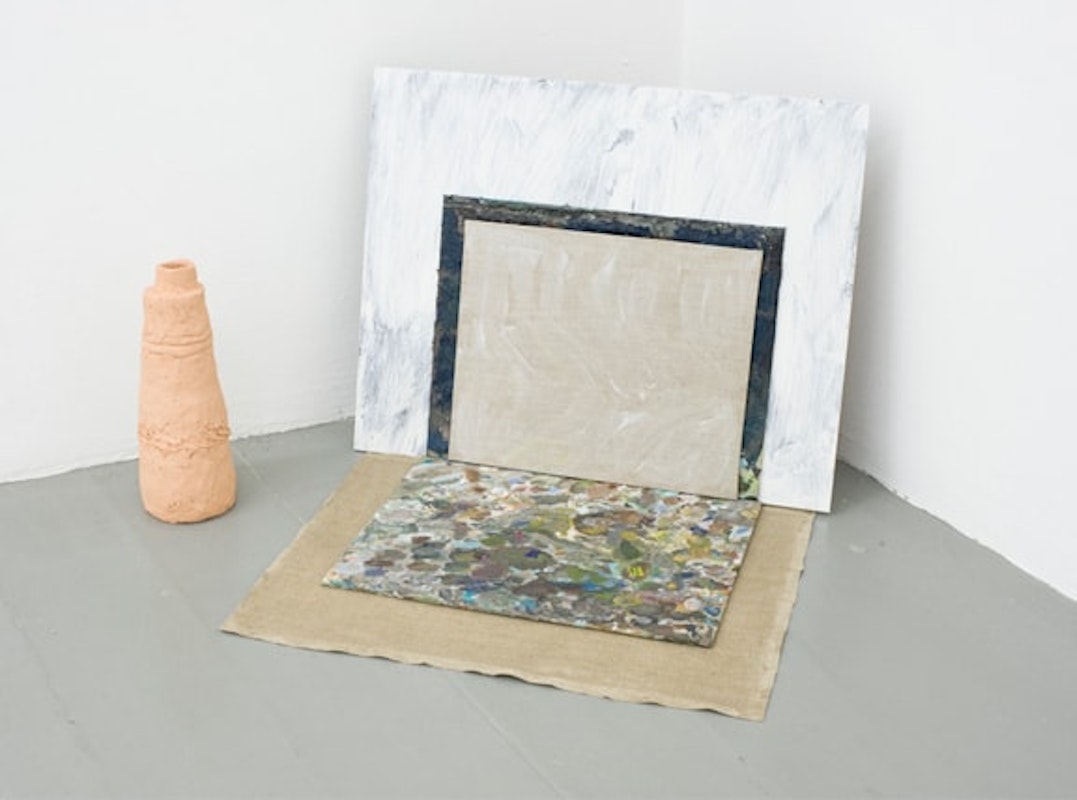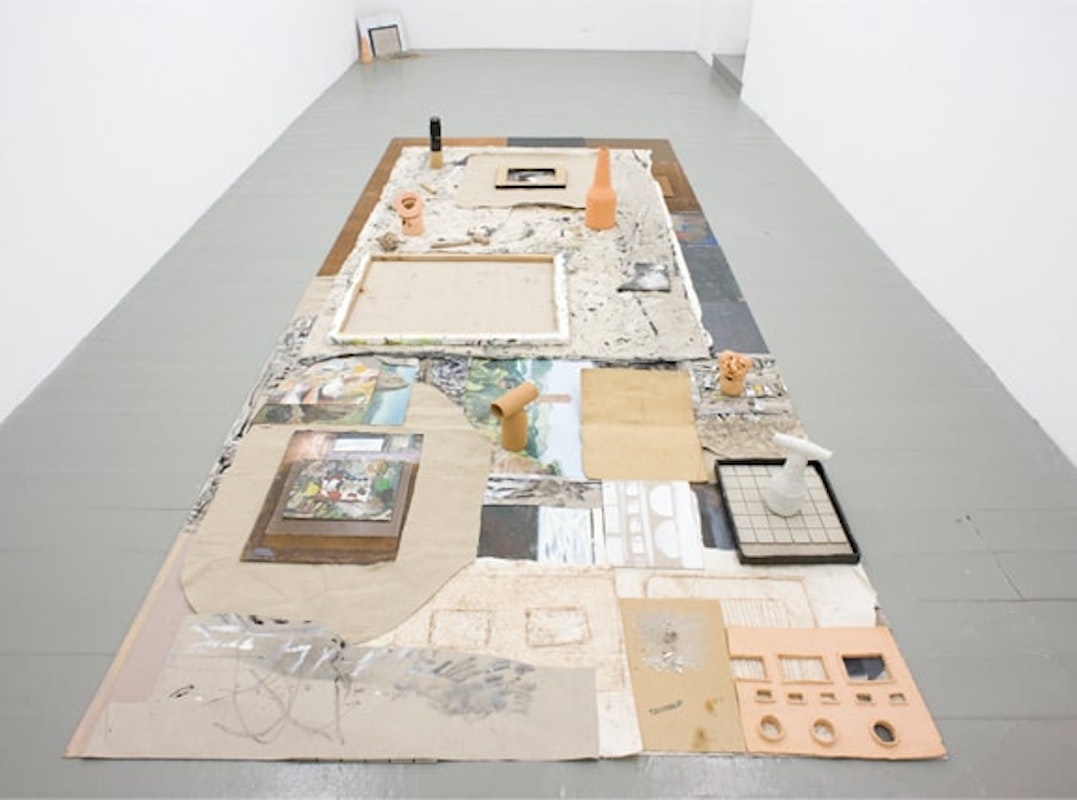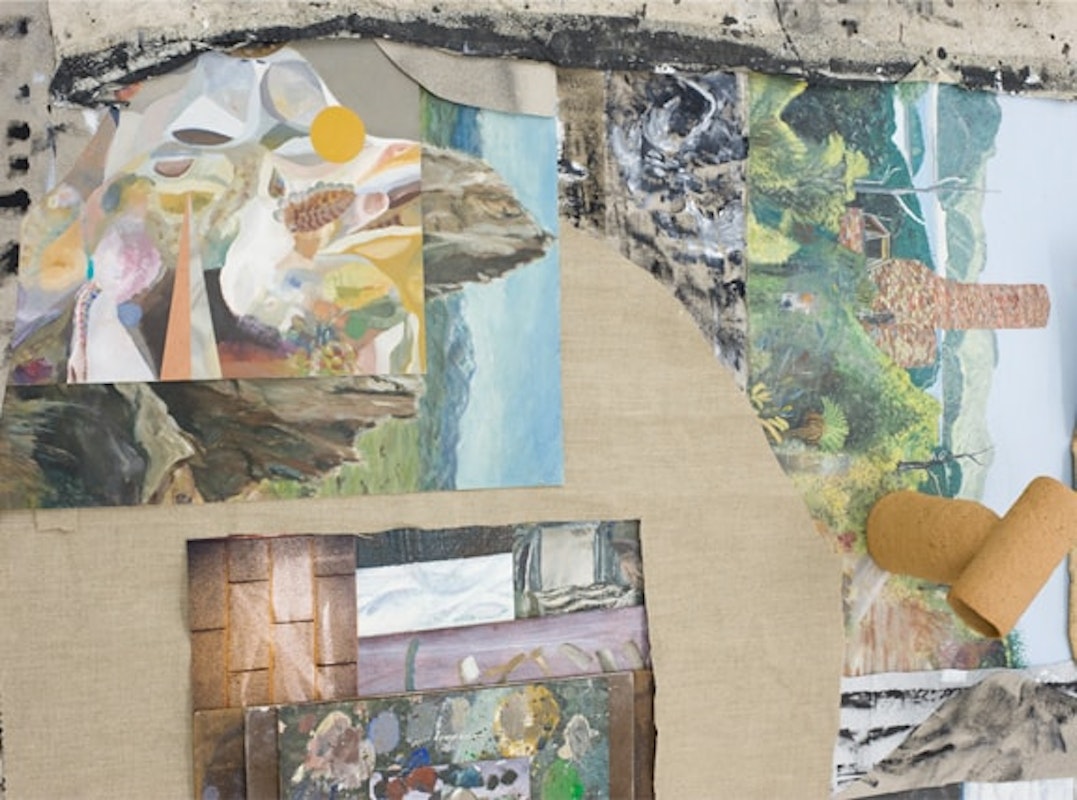
13 July -
18 August 2012
Studio 12
200 Gertrude Street, FitzroyOpening: Friday 13 July, 6—8pm
Catalog text produced for Gertrude Contemporary and Art and Australia Emerging Writers Program -
A book titled Joyful Architecture came into Jake Walker’s possession by chance. A friend brought it back from an op-shop in Tasmania because images of the home and studio of prominent New Zealand architect Ian Athfield reminded him of Walker’s paintings. Inside was a photograph of Jake Walker as a young boy. Walker had spent time in Athfield’s home and studio during his childhood and, until this serendipitous discovery, he had been unable to locate what inspired the vernacular, tower-like forms visible in his painterly assemblage.
Walker’s Studio 12 exhibition, Painting and Relief, is a floor-based composition of paintings and ceramics – of objects both found and made. Walker describes his work as having a way of introducing him to himself and, while there are strong references to his personal history and Wellington childhood in this exhibition, the sources of inspiration are completely re-formulated to open up new possibilities and further avenues for exploration. There is a nostalgic attitude, as Walker simultaneously embraces modernist interests in abstraction and is pulled towards subject matter from his own past. The tension of these elements in interplay is then overlaid with a commentary on studio practice itself: aspects of the art-making process form part of the installation, along with visual references to broader western art history. Through carefully considered filtering, hiding, selecting and layering, a new multi-dimensional landscape is created. This is a continued erasing and re-writing of a personal narrative that grows richer each time it’s shared.
Within a defined frame on the floor Walker has tiled together detritus swept from Studio 12 before installing, ceramic experiments, tiles from his previous studio, a single photograph and a found landscape painting adjusted by him to include Athfield-inspired architecture. His original landscape paintings are modestly placed on top of each another so we only see the areas he is ready to reveal. One canvas is presented upside-down with its surface completely concealed; its presence as a painting is felt by the spills that emerge around the edges and onto its backside. A drop-sheet that Walker believes was used by at least two other Gertrude Contemporary studio–mates is visible underneath. The blemishes on it resemble Pollock’s expressionist markings, which appear also to enter into areas of Walker’s more self-consciously composed canvases. The drop-sheet resides below as a reminder of the beauty of uncontrolled mark-making and as a reference point for Walker’s painting practice.
Walker’s fascination with other people’s studios and the artist’s process is evident in his documentary blog Studio Visit, which contains his photographs of friends immersed in the creative process, along with other interesting findings, such as Kate Smith’s mouldy tea cup or Sarah Crowest’s reusable ‘to do’ notes inherited from her father. The resulting assemblage is not a self-enclosed work, rather it takes on a variety of materials and influences from the outside environment that overlap with Walker’s personal history.
When I visited Walker’s studio, he fondly recounted walking through the Athfield mansion, stumbling upon a nude life-drawing class being held in one of the many rooms; and sitting in the round tower windows, looking out over the landscapes still so frequently recalled in his work. The softness of his brushstrokes portrays a romanticised version of Wellington and alludes to the blurriness experienced by looking at country through a car window, leaving it behind. Walker’s landscapes are painted from above, providing a topographic sensibility and a sense of removal or distance. A single painting behind perspex in Painting and Relief further emphasises the idea of fading memory. The telephoto lens sitting upon a ceramic base suggests both a past that is no longer in focus and the necessity of capturing and embracing the everyday. While a strong sense of nostalgia is contained within Walker’s work this is not an attempt to hold onto the past, instead he is borrowing from this history in order to continuously redefine it for himself. It’s is an autobiographical inquiry into his sense of belonging, a reimagined idea of home.



